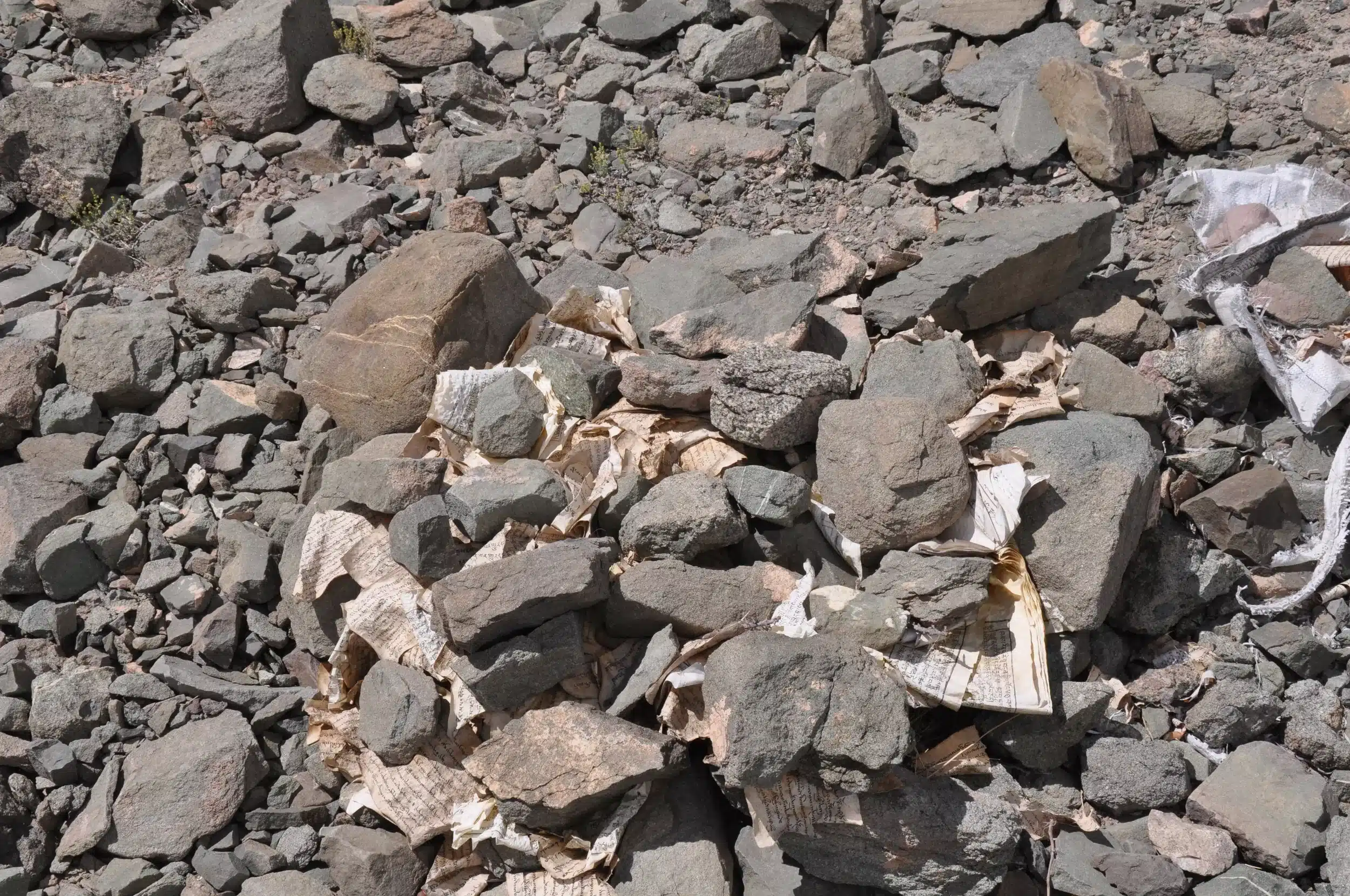
BDRC recently published online the Matho Fragments, an extremely rare collection of ancient manuscripts—these are in fact the oldest manuscripts ever discovered in Ladakh. These manuscripts from Matho are composed of the fragmentary remains of over 433 texts, few of which span more than a few damaged pages. Until 10 years ago they had been interred in a Buddhist stupa undisturbed since the 12th century.
Professor Helmut Tauscher and Bruno Lainé of Tibetan Manuscript Project Vienna, first learned about the Matho manuscript fragments in 2014 from locals and acquaintances including Nelly Rieuf, an art restorer & later director of the Matho Museum, which helped preserve them. They finished photographing the fragments in 2015. This collection of texts only became available to the wider world in the winter of 2023 when they were published on BDRC, thanks to the generosity of Professor Tauscher. Another crucial factor to their publication was a recent software development made by BDRC last year: an AI-powered tool for cropping photos of texts called SCAM. SCAM is capable of cropping texts with irregular shapes and edges, which was necessary for the Matho Fragments. Dr. Lainé used SCAM to automatically process all pages in the collection in a matter of weeks. By hand it would have taken him months and months of tedious work.
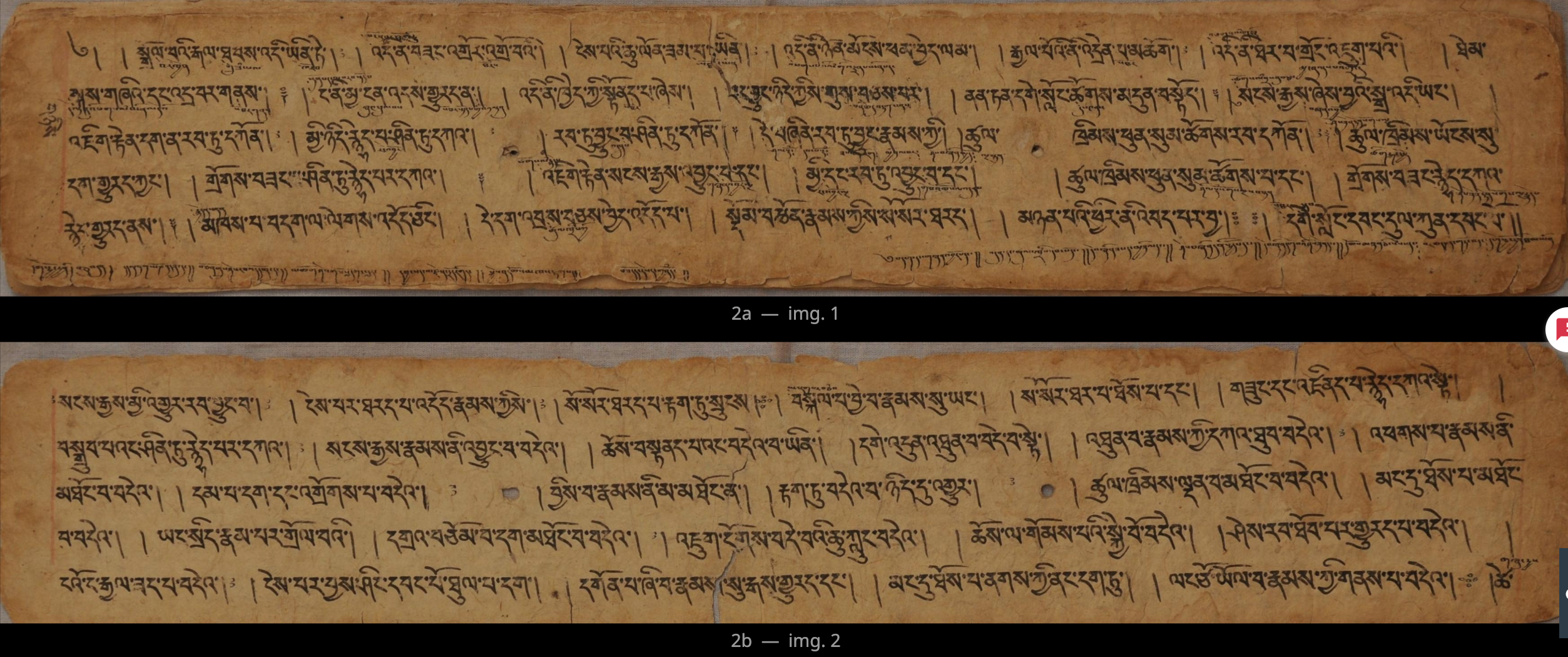
BDRC recently published the rare and ancient Matho Fragments from Ladakh.
The research value of these texts is extraordinary; they are perhaps the biggest discovery in Old Tibetan studies in many years. Preliminary research into these fragments by scholars has already made remarkable discoveries of entirely new translations of certain scriptures from Sanskrit. Scholars have also discovered that among the fragments have survived portions of canonical texts that were lost before the Kangyur was codified in Tibet. This is a rich treasure trove—and a time capsule from almost a thousand years ago—which will allow researchers to make many other exciting discoveries.
Background
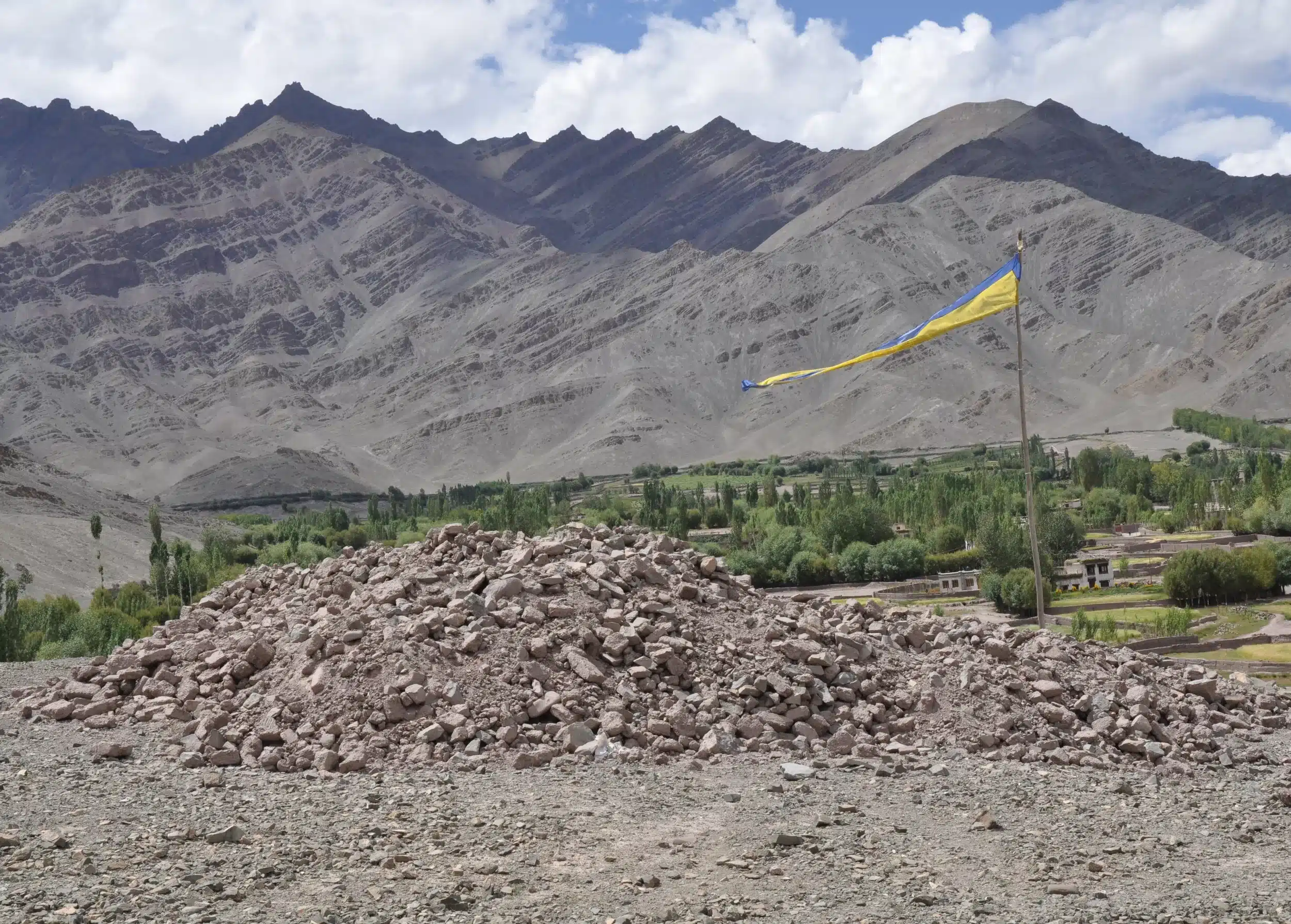
Matho (mang spro) village in Ladakh (at the edge of the Tibetan plateau), like many other villages, had some 50 stupas on the outskirts of the village. One local legend associated the stupas with the Tibet/Mongol-Ladakh-Mughal war of 1680. Another local legend associated the stupas with an older time period, the time of the kings—when there were still kings at Matho and the land was still called Maryul. And as it turned out, the stupas were indeed very old and dated to the 12th century. Some of the manuscripts and items interred in the stupas were even older.
It was Luding Khen Rinpoche, the head of the Ngor subsect of the Sakya tradition, who diagnosed the set of stupas as having some malign influence on the village and suggested that they should be destroyed. The Matho villagers didn't immediately act upon Luding Khen Rinpoche's suggestion, but they eventually deconsecrated and demolished the stupas in 2014.
During the ritual dis-interment and break-up of the stupas, many of the interred texts, remains, and relics uncovered within the stupas were thrown into the river. But some locals who wanted to preserve the items saved some of the materials, including almost all of the sacred material from the two stupas that they called the King's stupa and the Queen's stupa, as well as some others.
Presumably, centuries ago, the King and Queen's stupas were indeed the sacred burial site of local royalty. For our purposes, what's important to know is that these contained, among other items, a thangka, human hair, tsa tsa and other ritual objects and items, and manuscripts. One of the locals brought a fragment of a thangka to the attention of Nelly Rieuf.
Nelly Rieuf, who came from a family of art restorers, was living in Matho at the time and working on restoring the murals at the local Matho Monastery. She knew immediately that the thangka was unique. It turned out to be an ancient 12th century Kashmiri thangka. Nelly Rieuf, the monks at Matho, and some of the locals now began to carefully collect and preserve as much of the materials and remains from the stupas as they could.
Matho Fragments Project
Helmut Tauscher and Bruno Lainé were in Ladakh in 2014 on fieldwork, when they heard about the discovery of manuscript fragments at Matho. Immediately interested, they went to Matho and began digitizing and preserving the fragments. Some of the fragments were birch bark manuscripts which were very rare in the region, so that was tremendously exciting for them, and they realized that these were ancient and valuable texts.
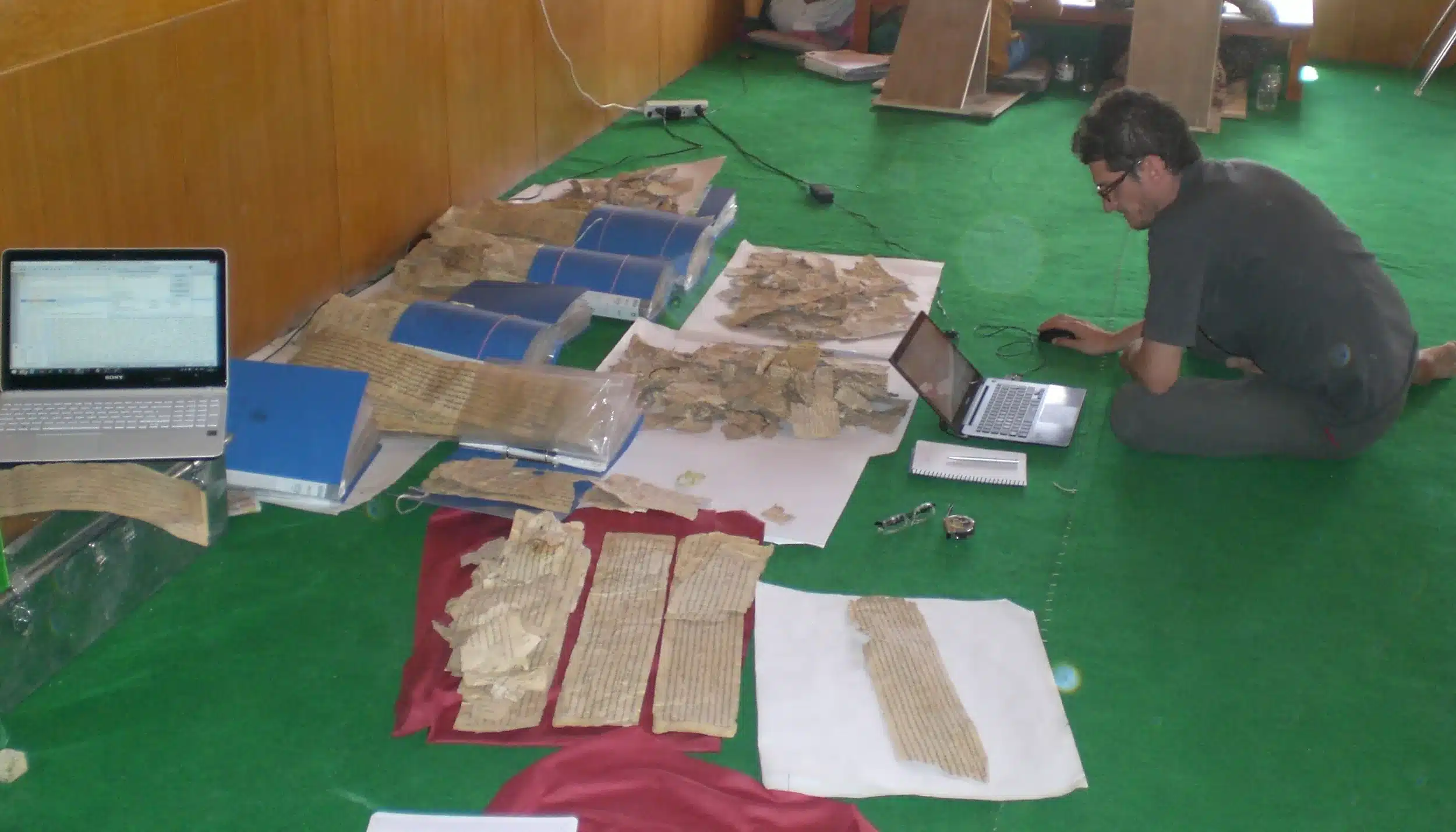
The next year, Helmut Tauscher went back to Matho and finished photographing the remaining fragments. Following that, Helmut and Bruno worked on identifying and creating a list of the canonical texts which they could identify. After that was finished, the scans remained backlogged in Vienna for some time. But with the release this year of BDRC's SCAM tool—the Segment and Crop Anything Model that we designed based on META's SAM tool—Bruno finally had the means to complete the task.
In 2023 we had made the SCAM tool freely available to our partners and to the public by openly sharing the code on Github under a free license. Using SCAM, Bruno was able to crop and process the images in weeks, saving him months of time.
As Bruno told us, "SCAM is a very helpful tool. The manual cropping of the images would otherwise take several months for me, but with SCAM, I can manage it in a week because of the good accuracy of the program."
BDRC is delighted to share the images on BUDA. Resources for Kangyur and Tengyur Studies is working on a full catalogue of the Matho fragments, and plans to publish the catalogue and images on the rKTs site in the future as well.
We hope that you will find many termas among these treasures! Please explore and share your comments and discoveries with us.
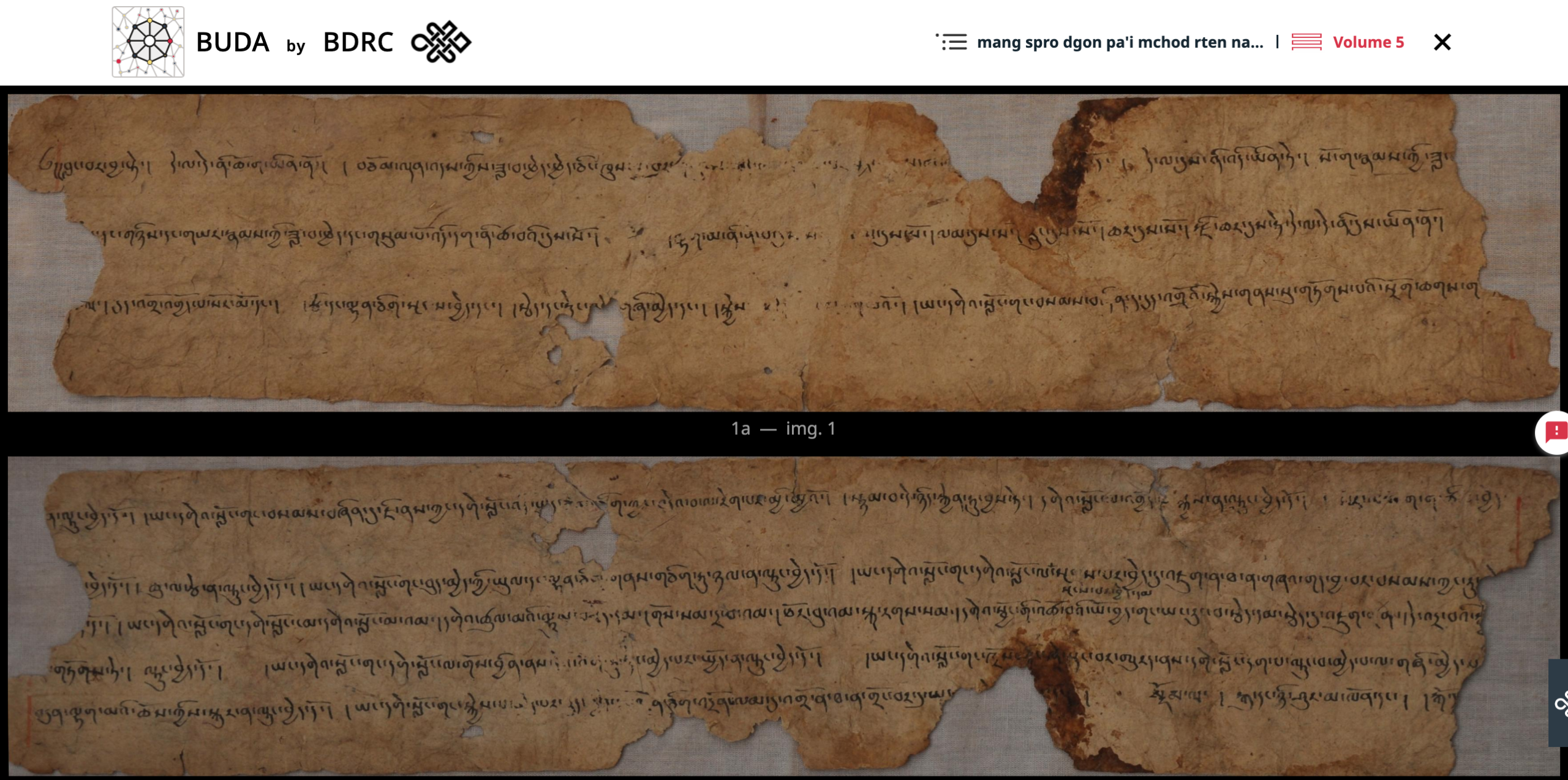
BDRC recently published the rare and ancient Matho Fragments from Ladakh.
Further Reading
You can view a number of Matho thangkas here and learn more about Nelly Rieuf and the Matho Museum project.
https://www.calameo.com/read/002556684c3f1ed345f33?authid=Od1fL0UEUV4G
Helmut Tauscher has written a paper on the background of the manuscripts and their project to preserve and digitize them. Manuscript Fragments from Matho: A Preliminary Report and Random Reflections is available to read online. https://himalaya.socanth.cam.ac.uk/collections/journals/ret/pdf/ret_51_16.pdf
Researchers are already working on these manuscripts and fragments. Dan Martin has been writing up his Matho discoveries on his blog Tibetologic, and we encourage you to read his posts on these valuable materials. On the only terma that has been found so far in the fragments, Dan Martin writes, "I won't suggest that this Matho text is just a small contribution to early Terma manuscript study. In some very real sense it might be taken as a beginning point."
- https://tibeto-logic.blogspot.com/2023/12/the-only-terma-in-matho-termas.html
- https://tibeto-logic.blogspot.com/2023/12/five-seals-of-bon-new-surprises.html
- https://tibeto-logic.blogspot.com/2023/12/the-all-making-kings-earliest-fragment.html
Dan Martin's short handlist on the fragments can be found here:
https://sites.google.com/site/tiblical/matho-fragments-handlist
Note: Images from the field are courtesy of Helmut Tauscher.





Pingback:BDRC Report on Matho Manuscripts – Tibetan Manuscript Project Vienna
Posted at 09:14h, 12 January[…] a recent blog post, our long-term cooperation partner BDRC provides a report about the so-called "Matho […]